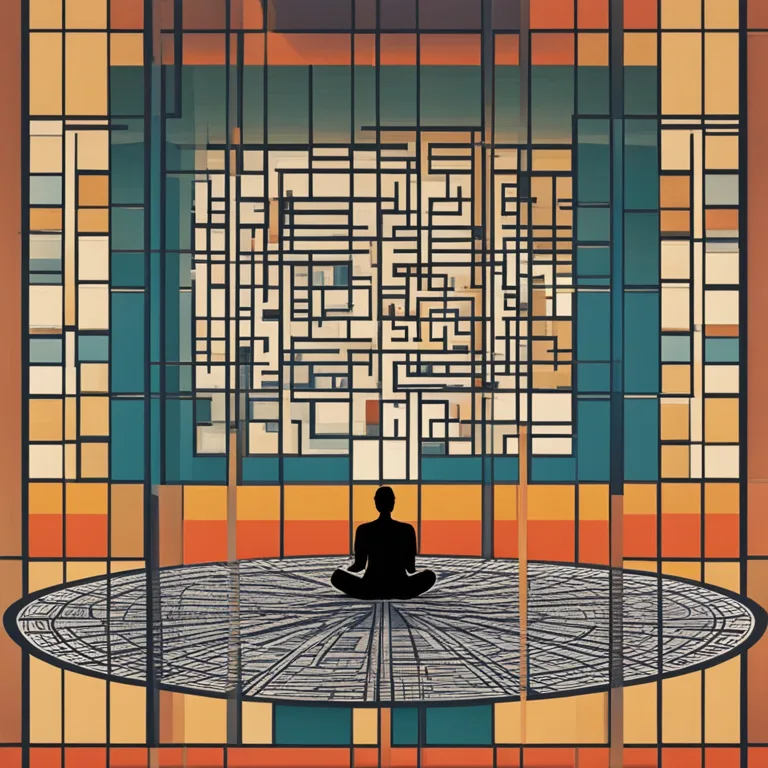
Mindfulness Meditation: Daily Serenity
Embrace daily calm and clarity through the art of mindfulness meditation—a simple practice for a balanced life.
article by Hina Kurosawa
The Essence of Mindfulness Meditation
In a world constantly buzzing with activity, mindfulness meditation emerges as a beacon of tranquility. It's the art of anchoring oneself in the present moment, observing thoughts and sensations without judgment. By incorporating mindfulness into daily routines, individuals can cultivate a serene mindset that enhances overall well-being. The practice isn't about silencing thoughts, but rather about noticing them with acceptance and compassion. Engaging in mindfulness meditation every day has the potential to reduce stress, bring clarity to the mind, and improve focus.

Creating Space in Daily Life
Integrating mindfulness meditation into your day begins with creating intentional space for the practice. It doesn't require extended hours; even a few dedicated minutes can make a significant impact. Start by choosing a regular time—perhaps in the morning to set a calm tone for the day or in the evening to unwind. Find a quiet corner that invites relaxation, and make this your meditation haven. By establishing a specific place and time, you create a routine that strengthens your meditation habit.

The Impact on Stress and Anxiety
Today's fast-paced lifestyle often leads to increased stress and anxiety. Mindfulness meditation serves as a counterbalance, providing a natural method to mitigate these feelings. Studies have shown that regular practice can physically alter brain regions associated with stress, fostering resilience against life's pressures. The technique encourages individuals to stay present, curbing the tendency to ruminate on past woes or future anxieties.

Enhancing Relationships through Mindfulness
Mindfulness meditation extends its benefits beyond personal serenity; it can also enrich one's relationships. By developing a greater awareness of one's emotions and reactions, practitioners are better equipped to communicate with kindness and patience. This heightened emotional intelligence can lead to more harmonious interactions with others, manifesting as improved empathy and understanding.

Merging Mindfulness with Everyday Tasks
Mindfulness doesn't have to be confined to a meditation cushion; it can be woven into daily life. Engaging fully in routine activities, such as eating, walking, or even washing dishes, can transform them into mindful exercises. This approach helps channel the mind into the present, turning mundane tasks into opportunities for self-reflection and grounding.
Tools and Techniques for Beginners
For those new to this practice, starting with guided meditations can be immensely helpful. Many apps and online platforms now offer an array of mindfulness sessions tailored to all levels. Additionally, simple breathing techniques, like the 4-7-8 method or mindful observation of breath, are excellent introductory tools. As proficiency grows, one can gradually transition to unguided sessions, allowing for a more personal and introspective experience.
Embracing Mindfulness as a Lifestyle
Ultimately, mindfulness meditation is more than just a practice; it's a lifestyle choice. By committing to this path, you embrace a life of awareness, presence, and peace. The journey is not without challenges, but the fruits of mindfulness are rich and enduring. It serves as a gentle reminder that every moment is an opportunity to connect with ourselves and the world more deeply.
Published: 1/8/2024
Modified: 1/8/2024
More predictions
Come back here soon to learn more about yourself and your future


Finger Meditation: A Guide to Fingertip Harmony
Discover the transformative power of finger meditation techniques for inner harmony and mindfulness in this comprehensive guide.


Meditation and Depression: A Path to Healing
Discover the potential of meditation as a complementary treatment for depression, delving into how mind-calming practices might offer a beacon of hope for those seeking relief.


Harmonize Your Spirit: Energy Meditation Techniques
Discover the serene world of energy meditation to harmonize the spirit, balance the chakras, and foster inner peace in our modern lives.